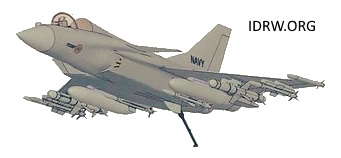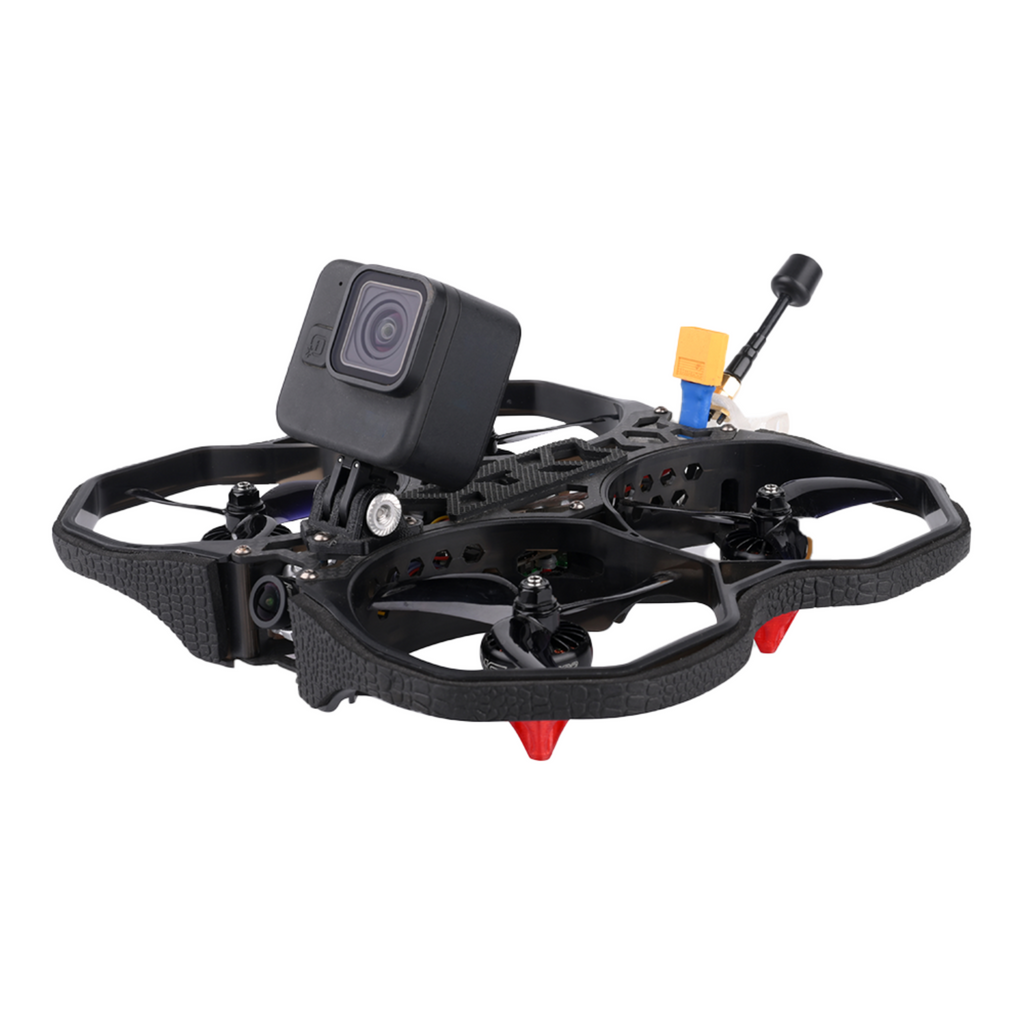AFI
SOURCE: AFI

The TEDBF (Twin Engine Deck Based Fighter) program, a critical component of India’s indigenous defense manufacturing initiative, represents a significant step forward in strengthening the nation’s aerospace capabilities. A pivotal decision facing this program is the choice of the engine. Advocating for the 80kN Kaveri engine over the foreign F-414 engine is not just about fostering self-reliance; it also presents a strategic and operationally sound choice. Comparing the Kaveri engine to the Rafale M’s M-88 engine further highlights its potential benefits.
The Kaveri engine, an indigenous project by the Gas Turbine Research Establishment (GTRE) of India, offers a thrust of 80kN. Its integration into the TEDBF would mark a significant milestone in India’s journey towards defense self-reliance. Currently, the Kaveri engine is approaching technological maturity, and its inclusion in a high-profile project like the TEDBF would provide the necessary impetus for its final development stages, ensuring it enters production.
Continue readingSOURCE: AFI

In a groundbreaking development that underscores India’s burgeoning defense capabilities, a Surat-based startup, Inside FPV, has clinched a pivotal deal with an Israeli defense contractor. The agreement involves the supply of a lethal drone, aptly named Defence Drones to the Israeli military. This strategic partnership marks a significant milestone for the city, often recognized as India’s diamond hub, as it catapults into the global defense arena.
Founded in 2020 by a trio of entrepreneurs – Arth Chowdhary, Deyvant Bhardwaj, and Oshi Kumari – Inside FPV has rapidly gained traction with its innovative approach to drone technology. The startup’s flagship product is a user-friendly “plug-and-fly” unmanned aerial vehicle (UAV) that outperforms competitors in terms of ease of operation. Besides manufacturing drones, the company also offers a robust online platform for drone parts and accessories.
Continue readingSOURCE: AFI

The Surya Command of the Indian Army recently unveiled an impressive array of advanced loitering munitions and robotic systems, highlighting the increasing integration of cutting-edge technology in modern warfare. The showcase included state-of-the-art drones, robotic mules, and quadrupeds, all designed to enhance the operational capabilities of the Indian Armed Forces.
Here are the key systems presented as per above image sequence.
Continue readingSOURCE: AFI

A potential maritime standoff is brewing in the Bay of Bengal as China’s ocean research vessel, Xiang Yang Hong 03, is steadily making its way into the region. Simultaneously, India has issued a Notice to Airmen (NOTAM) declaring a no-fly zone for a planned naval subsurface firing exercise in the same general area.
The proximity of the Chinese vessel to the Indian naval exercise, a mere 120 nautical miles, has raised eyebrows and sparked concerns about potential intelligence gathering activities. While China officially maintains that its vessels are engaged in civilian research, India remains vigilant about their activities in the Indian Ocean Region, considering them as potential dual-use platforms with military applications.
Continue readingSOURCE: AFI

In a remarkable display of international military collaboration, three South Korean F-15K and Indian Su-30MKI fighter jets participated in joint air drills during the major multinational Exercise Pitch Black in Australia. This exercise, renowned for its scale and complexity, brought together air forces from around the globe to enhance operational capabilities and foster mutual understanding among participating nations.
A video released by the Korean Air Force captures the essence of this cooperation, showcasing South Korean F-15K and Indian Su-30MKI fighter jets preparing for takeoff. The imagery not only highlights the advanced capabilities of these formidable aircraft but also underscores the growing synergy between the air forces of South Korea and India.
Continue readingSOURCE: AFI

Twenty-five years after Operation Vijay, the discourse around the Kargil War remains vibrant, marked by introspections on the lack of coordination among security agencies and the delayed response to the Pakistan Army’s incursion. Air Marshal Narayan Menon (Retd), who was the Air Officer Commanding, Jammu & Kashmir during the conflict, asserts, “If everyone had been on the ball, the Kargil war would not have happened.”
Menon, a seasoned veteran who also served as a pilot in the 1965 war and as a flight lieutenant in the 1971 war, played a pivotal role in ‘Operation Safed Sagar,’ the aerial aspect of Operation Vijay. For his service, he was awarded the Uttam Yudh Seva Medal. He candidly reflects on the initial missteps, acknowledging that the early stages of the Kargil conflict were marred by poor communication between the Army and Air Force, which hampered operational planning.
Continue readingSOURCE: AFI
The highly anticipated joint India-US space mission, NISAR, appears to be facing significant delays. The ambitious project, which was slated for launch in the first half of 2023, has been conspicuously absent from the Indian Space Research Organisation’s (ISRO) list of missions planned for this year.
NISAR, or NASA-ISRO Synthetic Aperture Radar, is a groundbreaking satellite designed to provide unprecedentedly detailed observations of Earth’s surface. Its ability to detect changes as small as a centimeter has the potential to revolutionize our understanding of climate change, natural hazards, and other critical Earth processes.
Continue readingSOURCE: AFI

A Hyderabad-based company, Hylenr, has caused a stir by unveiling a potentially revolutionary technology: a low-energy nuclear reactor (LENR) designed for household use. This compact reactor, claimed to be the world’s first cold fusion technology for clean energy generation, could fit right on a tabletop and provide enough power for a typical home.
Hylenr’s LENR reactor mimics the process that powers the sun – nuclear fusion. By stimulating the fusion of hydrogen molecules with a small amount of electricity, the reactor generates excess heat.
Continue readingSOURCE: AFI

The Defence Research and Development Organisation’s (DRDO) Centre for High Energy Systems and Sciences (CHESS) has issued an Expression of Interest (EOI) for the design and development of a Beam Control System (BCS) for a high-power laser. This system is anticipated to be a critical component in the development of advanced laser-based weapons.
The BCS is expected to have the capability to accurately acquire and track Medium Altitude Long Endurance (MALE) and High Altitude Long Endurance (HALE) Unmanned Aerial Vehicles (UAVs) at ranges up to 17 kilometers. This technology is seen as a potential game-changer in aerial defense systems.
Continue readingSOURCE: AFI

ideaForge Technology Limited, a global leader in drone technology, announced a strategic partnership with Inertial Labs, a pioneer in innovative inertial sensors and integrated GPS systems. This collaboration aims to integrate Inertial Labs’ cutting-edge RESEPI LiDAR solution into ideaForge’s high-performance UAVs, delivering enhanced accuracy and reliability for aerial data collection and 3D mapping.
The partnership addresses the growing demand for LiDAR-based drones across industries such as surveying, mapping, mining, construction, forestry, power line inspection, and search and rescue. By combining ideaForge’s UAV expertise with Inertial Labs’ precise LiDAR technology, the collaboration offers a powerful solution for capturing aerial data with unmatched precision and speed.
Continue readingSOURCE: AFI

As Indian External Affairs Minister S. Jaishankar prepares to meet U.S. Secretary of State Antony Blinken, fissures in the India-U.S. relationship have resurfaced, particularly over India’s ties with Russia. The timing is critical, given recent developments that have the potential to strain bilateral relations further.
One of the primary points of contention is the sale of the General Electric F-414 engines to India, which includes an 80% transfer of technology (ToT). This deal is crucial for India’s defense modernization and indigenous fighter jet programs. However, reports suggest that the U.S. might slow down the approval process for this sale, raising alarms within India.
Continue readingSOURCE: AFI

In a significant move to boost the country’s Earth observation (EO) space economy, the Indian National Space Promotion and Authorisation Centre (IN-SPACe) has announced a Public-Private Partnership (PPP) initiative. Through an Expression of Interest (EOI) released on July 25th, IN-SPACe is inviting Indian companies to participate in the design, construction, and management of a space-based EO system.
This project represents a major leap forward for India’s space industry. Selected Indian entities (Non-Governmental Entities or NGEs in space terminology) will have the opportunity to design, build, and launch a constellation of satellites equipped with advanced imaging technologies. These satellites will operate in Low Earth Orbit (LEO) and carry a combination of sensors, including panchromatic, multispectral, hyperspectral, and microwave capabilities.
Continue readingSOURCE: AFI

General Upendra Dwivedi, the Chief of Army Staff (COAS), recently visited the forward locations of the Chinar Corps along the Line of Control (LoC) to review the security situation. During his visit, General Dwivedi interacted with the commanders and troops stationed in these strategic positions, demonstrating his commitment to understanding and addressing the challenges faced by the soldiers on the ground.
General Dwivedi’s visit to the LoC comes at a crucial time, given the persistent tensions and the strategic importance of the region. He conducted a thorough review of the current security measures and operational readiness of the Chinar Corps. The COAS’s presence and direct engagement with the troops serve to boost morale and provide firsthand insights into the operational dynamics at the front lines.
Continue readingSOURCE: AFI

A significant leap in India’s naval aviation capabilities was marked today with the commissioning of the Naval Aircraft and Ship Instrumentation (NASI) complex and the Airborne Weapon and Sensor Integration Lab (AWSIL) by Flag Officer Naval Aviation at the Naval Flying Training School (NFTS), Hansa.
This state-of-the-art complex is set to revolutionize flight testing by providing a comprehensive platform for the development and integration of advanced systems. The NASI complex will play a pivotal role in enhancing the operational efficiency and combat readiness of the Indian Navy’s aircraft fleet.
Continue readingSOURCE: AFI

Dassault Aviation has reported a steady increase in its Rafale order book. The company currently has a backlog of 223 Rafale aircraft, a 12-unit increase compared to the previous year. This robust order pipeline includes 159 aircraft destined for export markets and 64 for the French Air and Space Force.
Dassault is also actively engaged in negotiations with India for the sale of 26 Rafale Marine aircraft to bolster the Indian Navy’s capabilities. This potential deal is expected to be finalized later this year.
Continue reading